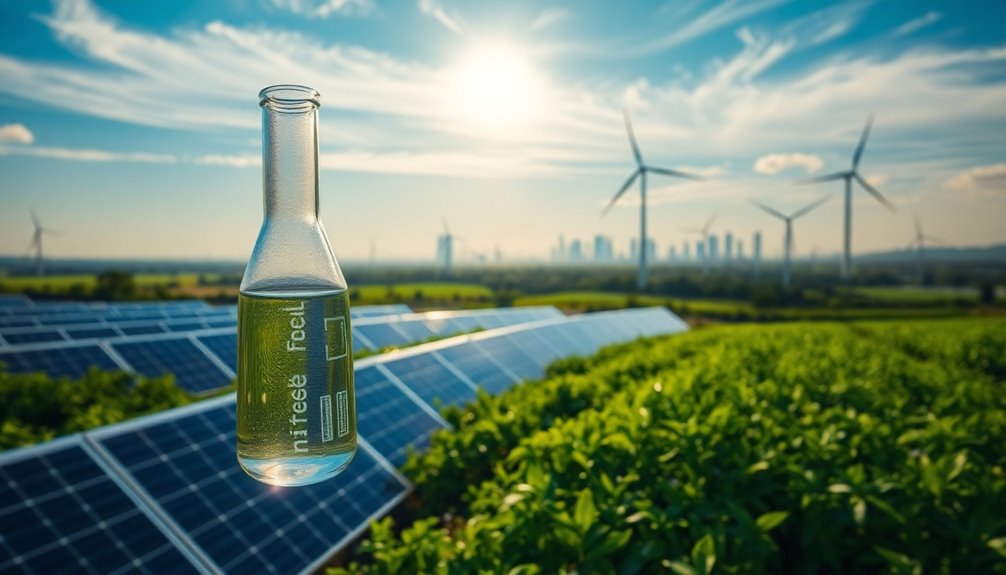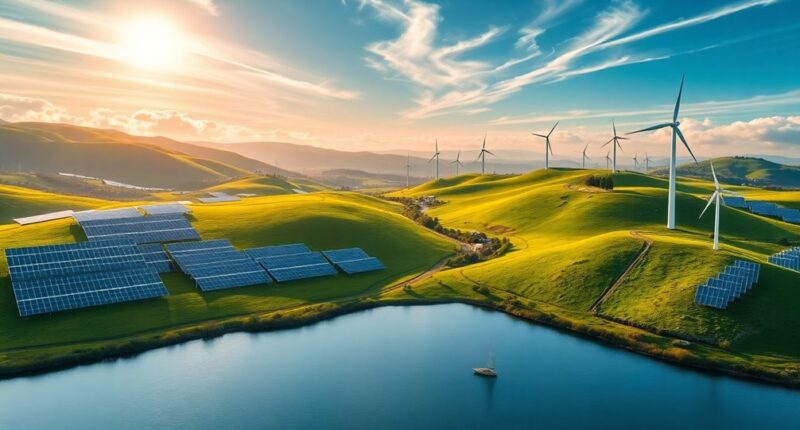Low-carbon fuels are vital for reaching net-zero emissions by 2050, especially in challenging sectors like transportation and heavy industries. They help lower greenhouse gas emissions significantly, but they often come with higher costs. Government support and technological advances are key to making these fuels affordable and accessible. Additionally, there's a need for improved infrastructure and collaborative efforts globally. If you're curious about how these elements weave together in integrated assessment models, there's more to uncover.
Key Takeaways
- Low-carbon fuels are essential for achieving net-zero emissions by 2050, particularly in transportation and heavy industries.
- Government policies, like Low Carbon Fuel Standards, support the adoption and affordability of low-carbon fuels.
- Technological innovation and global cooperation are crucial for the development and scalability of low-carbon fuel infrastructure.
- Economic implications include potential job creation and long-term cost savings despite higher initial adoption costs for low-carbon fuels.
- Addressing production challenges and enhancing carbon capture technologies are vital for effective low-carbon hydrogen production and overall fuel efficiency.

As the world grapples with climate change, low-carbon fuels play a crucial role in the transition to net-zero emissions by 2050. These fuels are essential for decarbonizing hard-to-abate sectors, like transportation and heavy industries. You'll find that sectors such as long-distance transport and steelmaking can significantly benefit from low-carbon alternatives. For instance, fuels like hydrogen and biofuels require advancements in carbon capture technologies to become viable options.
Switching to low-carbon fuels often comes with higher costs compared to traditional fuels. That's where government support becomes vital. Policies like Low Carbon Fuel Standards (LCFS) can help set achievable carbon intensity reduction goals, making it easier for industries to adapt. You'll notice that ethanol, for example, can reduce greenhouse gas emissions by 52% compared to gasoline, showcasing the tangible benefits of these alternatives. Furthermore, the US CO2 emissions from electricity generation have significantly decreased due to a shift toward lower-carbon fuels, demonstrating the potential benefits of a broader fuel transition.
Government support and policies like Low Carbon Fuel Standards are essential for making low-carbon fuels more accessible and affordable for industries.
Achieving net-zero emissions involves replacing fossil fuels with low-carbon options. Continuous technological innovation plays a crucial role in making this transition efficient. However, it's not just about innovation; global cooperation is necessary to harmonize regulations and support the widespread adoption of low-carbon fuels.
As you delve deeper into this issue, you'll see that the economic implications are significant. While low-carbon fuels are currently more expensive, they open new markets and opportunities for growth, but significant investments in infrastructure and technology development are required.
Moreover, you'll encounter production challenges, especially with synthetic fuels that are crucial for certain sectors. Efficient carbon capture technologies are essential for producing low-carbon hydrogen, while developing supply chains for these new fuels is vital. Upgrading existing infrastructure is another hurdle to overcome.
Ultimately, improving energy efficiency in production processes will be key to reducing overall emissions. With supportive policies and regulatory frameworks in place, the transition to low-carbon fuels can progress more smoothly, paving the way for a sustainable future.
Frequently Asked Questions
What Are the Main Types of Low Carbon Fuels?
When you think about low carbon fuels, you'll find several main types.
Liquid fuels include biofuels like ethanol and biodiesel, and renewable diesel made from vegetable oils.
Gaseous options consist of hydrogen, especially green hydrogen, and biogases derived from organic waste.
Synthetic fuels, produced from CO2 and renewable hydrogen, also play a role.
Each type aims to reduce emissions and support decarbonization in sectors where electrification's tough.
How Do Integrated Assessment Models Work?
Integrated assessment models (IAMs) work by combining insights from various fields to analyze the interplay between human activities and the environment.
You'll find that they consist of interconnected modules covering economics, energy, land use, and climate.
By simulating different scenarios, IAMs help you evaluate policy options and their potential impacts on climate change.
They rely on assumptions about future trends, allowing you to explore pathways toward sustainable development and informed decision-making.
What Are the Challenges in Implementing Low Carbon Fuels?
Implementing low carbon fuels poses several challenges.
You'll face high production costs and limited financial incentives that hinder progress. Inefficient production processes and the need for new infrastructure complicate scalability.
Regulatory frameworks often lack harmony, making it tough to adopt these fuels widely. Moreover, competition for resources and public perception can influence acceptance.
How Do Low Carbon Fuels Impact Energy Prices?
Low-carbon fuels can initially raise energy prices due to higher production costs, but as technology improves, these costs often decline.
By diversifying energy sources, they help stabilize prices and reduce volatility.
You'll see that while climate actions may contribute slightly to retail gas prices, the overall impact is manageable.
In the long run, adopting low-carbon fuels can lead to competitive pricing and potentially lower costs as market dynamics evolve.
What Role Do Governments Play in Promoting Low Carbon Fuels?
Governments are the superheroes in the fight for low-carbon fuels! They create policies like low-carbon fuel standards, offering incentives that make cleaner options financially attractive.
By investing in infrastructure such as EV charging stations, they ensure these fuels are accessible. Moreover, they enforce regulations that push manufacturers toward zero-emission vehicles.
Through international cooperation, they share best practices, leading the charge in reducing emissions and promoting sustainable energy solutions for everyone.
Conclusion
In your journey toward understanding net-zero goals, consider this: transitioning to low carbon fuels could cut global greenhouse gas emissions by up to 70% by 2050. That's a staggering statistic that highlights the potential impact these fuels can have on our climate future. By integrating low carbon fuels into energy systems and assessment models, you're not just contributing to a cleaner planet—you're actively shaping a sustainable legacy for generations to come. Let's fuel that change together!









